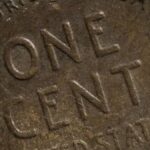The Lincoln Wheat Penny, a coin that once served as a humble currency in everyday transactions, has now become a prized collectible. Some rare versions of this penny have gained extraordinary value over the years, with one particular coin reportedly worth a staggering $34 million. Let’s explore the fascinating history, features, and reasons behind the incredible value of this iconic coin.
Introduction to the Lincoln Wheat Penny
The Lincoln Wheat Penny, also known as the “Wheat Cent,” was first minted in 1909 to commemorate the centennial of Abraham Lincoln’s birth. Designed by Victor David Brenner, the coin features Lincoln’s profile on the obverse (front) and two wheat stalks on the reverse (back), symbolizing prosperity. It was the first U.S. coin to feature a real person, breaking away from the tradition of symbolic figures.
The coin was minted until 1958, after which the reverse design was replaced by the Lincoln Memorial. Despite being out of production for decades, the Wheat Penny remains a popular item among collectors and history enthusiasts.
What Makes This Penny Worth $34 Million?
Not every Lincoln Wheat Penny is worth millions; its value depends on specific factors such as rarity, condition, and historical significance.
- The 1943 Bronze Wheat Penny
One of the rarest and most valuable Lincoln Wheat Pennies is the 1943 Bronze Wheat Penny. During World War II, the U.S. Mint switched to using zinc-coated steel for pennies to conserve copper for the war effort. However, a small number of bronze planchets (metal discs) were accidentally used to mint pennies.
These bronze pennies from 1943 are considered minting errors and are incredibly rare. Collectors prize them for their unique history, and one such coin was reportedly sold for millions at auction.
- Condition and Grading
The value of any coin depends heavily on its condition. Coins graded as “Mint State” or “Uncirculated” are worth significantly more than those with visible wear and tear. Coins with sharp details, no scratches, and a shiny appearance command premium prices. - Rarity and Demand
The rarity of a coin is another critical factor. The 1943 Bronze Wheat Penny is one of the rarest coins, with only a handful known to exist. The high demand among collectors further drives up its value.
Why Are Some Wheat Pennies Still in Circulation?
Despite their age, some Lincoln Wheat Pennies are still in circulation. This is primarily because billions of these coins were minted between 1909 and 1958. While most of these coins hold only sentimental or minor numismatic value, a few rare specimens like the 1943 Bronze Penny remain undiscovered, hidden in plain sight.
Many people overlook old pennies, not realizing their potential worth. It’s entirely possible for someone to find a valuable Wheat Penny in their pocket change or an old coin jar.
How to Identify a Rare Lincoln Wheat Penny
If you want to check whether your Wheat Penny is valuable, here are some tips:
- Look for the Year: Rare years like 1909-S VDB, 1914-D, and 1943 Bronze are highly sought after.
- Inspect the Mint Mark: Coins minted in San Francisco (S) and Denver (D) are often rarer than those from Philadelphia.
- Check the Condition: Use a magnifying glass to assess the coin’s details and shine.
- Seek Professional Grading: Consider having your coin graded by a professional service like PCGS or NGC for an accurate valuation.
The Appeal of Coin Collecting
The story of the $34 million Lincoln Wheat Penny highlights the excitement of coin collecting. For collectors, it’s not just about monetary value; it’s about holding a piece of history in their hands. Each coin tells a story of the era in which it was minted, from economic conditions to technological advancements.
Conclusion
The Lincoln Wheat Penny, particularly rare examples like the 1943 Bronze Penny, has become a symbol of numismatic treasure. With a value reaching $34 million, this coin is a reminder that everyday objects can hold extraordinary worth. Whether you’re a seasoned collector or someone new to the hobby, it’s worth checking your spare change—you might just discover a piece of history worth millions.
Disclaimer: The prices mentioned for rare coins, including the Lincoln Wheat Penny, are not guaranteed and may not be entirely accurate due to market fluctuations and varying appraisals.




